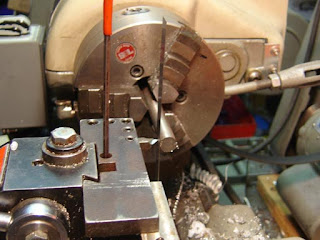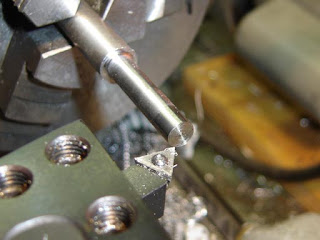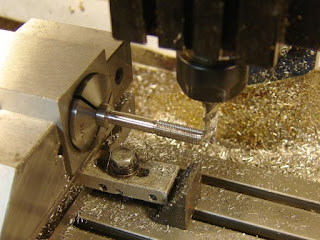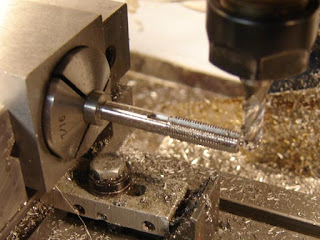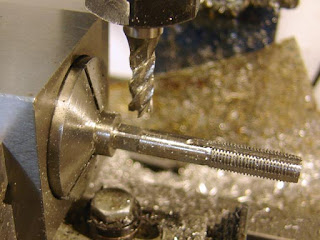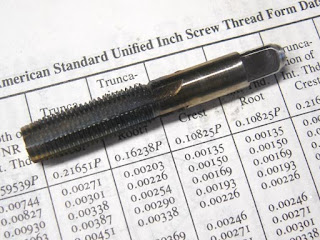
A Crosman 2300! Engraved "Carter Mk 1"

With Red Dot scope and grips that at first I thought were from the Custom Shop...but Derrick had made them just for the gun.

Unfortunately he had fitted them to a different grip frame, so they stuck out proud by a small amount.

The reason was the bezel around the safety.

But a little filing on the grips where they contacted and they sat flush. Beautiful grips and very comfortable.

I was surprised that the pistol came with a trigger spring adjuster. Of course one would just adjust it down to the minimum weight possible, but it shows that Crosman is at least thinking about those of use who don't like to use all our force just to shoot the darn thing.

Derrick suggested that it would benefit from some trigger/sear work so I stripped down the grip frame. You can see that the side plate does not sit flush.

And just as on the 1377, the sear can wobble on its pin, and a spring washer takes the slack out of the trigger pivot.

Again, just as I did on the 1377, I replaced the Crosman pins (.123") with dowel pins (.125" and polished much better than the Crosman pins)

I replaced the stock spring (L) with a shorter and lighter spring (R).

Crosman just assembles the guns with the bosses in the as die cast state, which is why the grip frame plate doesn't sit flush.

Again, you can see how the boss pushes the plate outwards.

So some light filing on the plate and the frame bosses.

Which removed any flash and allowed flat contact areas.

Now you can see how the plate is straight and flush.

Checking the width for the spring cap.

Turning a cap from Delrin.

The finished spring cap.

As on the 1377 I added thin shim washers to take up any slack in the sear and trigger.

I stoned the sear where it contacts the spring. Both the make it smoother and to provide a square contact. The part is stamped and not smooth as supplied.

And where it contacts the trigger. I made sure to polish along the axis of the sear.

The stones I used, a fine oil stone, a finer machinist's stone and finally a ruby hard stone to polish.

I put it all back together with a thin smear of moly lube on all sliding, rotating and contact surfaces.
The trigger is much smoother and just a little lighter. It isn't as distracting when shooting. The pistol is quite accurate! At 10 meters I can hit the small 3/4" targets on the Gamo Rocker Pellet Trap
Beyond all that, the 2300 is just fun to shoot. The .22 caliber impressively smacks tin cans, it's quick to load and pretty economical with the CO2.




















